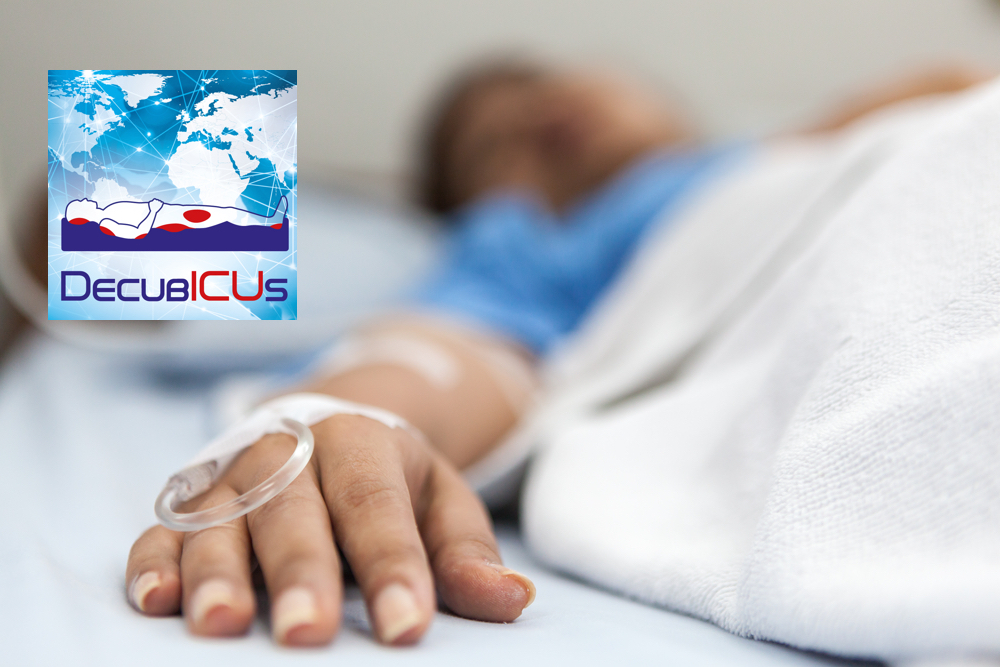Article Review: results from the DecubICUS study

Prevalence, associated factors and outcomes of pressure injuries in adult intensive care unit patients: the DecubICUs study
Decubitus lesions may occur over the whole body and affect the skin with its underlying structures, where pressure and shearing forces take place. Decreased mobility, perfusion, nutrition, and increased moisture are the most common predisposing factors. They are erroneously considered to affect exclusively chronic debilitated patients, but, in reality, they may evolve within few hours during constant loading. A well-documented classification ranks the injuries into stages I–IV, Unstageable, and Suspected Deep Tissue Injury according to the degree of tissue destruction.
Pressure wounds incite pain and cause disability, impact the quality of life, prolong hospitalisation by 5–8 days per pressure injury, therefore constitute a significant economic burden for healthcare systems. In the United States, the incremental hospital cost per patient of treating hospital-acquired pressure injuries is estimated at US$10,708, totalling US$26.8 billion at the national level.
The Decubitus in Intensive Care Units (DecubICUs) study was a worldwide prospective, observational, single-day point-prevalence study of pressure injuries among adult ICU patients with twelve-week follow-up for survival and length of hospitalisation. It describes the factors associated with pressure injuries, identifies global and ICU-related prevalence in conjunction with geographic and anatomical location and presents a contemporary picture of the problem in a vast, geographically diverse cohort of adult ICU patients.
Data comprised demographic, admission and physiological data related to the study day, including assessment by the Simplified Acute Physiology Score II (SAPS II). Determination of pressure injury was carried out by direct observation according to the international staging definitions. Decubitus risk determination was determined by the Braden Scale, which incorporates 6 subscales: mobility, activity, sensory perception, skin moisture, nutritional state, and friction/shear, with lower scores reflecting higher risk. Follow-up data included survival status, length of ICU and hospital stay until hospital discharge or at 12 weeks following the study day.
Participation included 1117 ICUs in 90 countries. The majority were mixed medical-surgical units (n = 729; 65.2%) and associated with university hospitals (n = 675; 60.4%).
The study identified 6747 pressure wounds in 3526 patients; 3997 were ICU-acquired (59.2%; 2145 patients). Injuries prior to ICU admission were diagnosed in 1381 patients; those developed during ICU stay in 1922; 233 patients developed injuries both before and during ICU stay.
Institutions from lower-middle to low-income countries reported the highest overall prevalence of pressure wounds (40.7%, 95% CI 36.7–44.8).
The most commonly affected anatomical sites were the sacral and heel regions, accounting for 37 and 19.5% of all decubitus wounds. Older age, male sex, low body weight, emergency surgery, decreasing Braden scores, prolonged ICU stay, chronic obstructive pulmonary disease, immunodeficiency, renal replacement therapy, mechanical ventilation on ICU admission, higher SAPS II score, and hospitalisation in a low to lower-middle-income economy were identified as independently correlated with ICU-acquired pressure injuries, with stronger, increasing associations with worsening Braden scores and increasing length of ICU stay before the study day.
STUDY STRENGTHS & LIMITATIONS
Strengths:
• A novel global epidemiology study of decubitus injury in adult ICU patients
• Tries to outline the general profile of a patient that is prone to pressure injuries
• It used an efficient training module and a well-documented and standardised protocol to actively search for pressure wounds, thus introducing a field of knowledge and culture that may improve severely ill patients’ quality of care
Limitations:
• The single-day, cross-sectional protocol may have resulted in errors springing from ICUs that report prolonged hospitalisations, thus becoming unrepresentative of ICUs with faster patient turnover and, therefore, lower pressure injury risk
• It presents a snapshot of that single study day. The study’s design takes into account staff population and experience but was unable to verify those reports affecting the precise or objective assessment of wounds or under-reporting of injuries due to fear of social or institutional castigation
• Because of the above and the under-representation of some geographic regions, the results of this study should be considered as broadened or expanded rather than global or generalised.
TAKE HOME MESSAGE
Decubitus injuries are frequent in adult ICU patients, and ICU-acquired pressure wounds are associated with inherent or constitutional components and increased mortality. They may be considered an index of the quality of hospital care. Since they affect patient outcomes, rehabilitation and financial burden, they require increased attention and clinical experience, appropriate prevention and treatment strategies, and a thorough understanding of the disease processes.
This article review was prepared and submitted by Dimitrios Papadopoulos MD, MSc, PhD, Senior Consultant in Intensive Care Medicine, General Hospital of Larisa, Larisa, Greece, on behalf of the ESICM Journal Review Club.
REFERENCE
Labeau S.O. et al. ~ Prevalence, associated factors and outcomes of pressure injuries in adult intensive care unit patients: the DecubICUs study. Intensive Care Med (2021) 47:160–169.